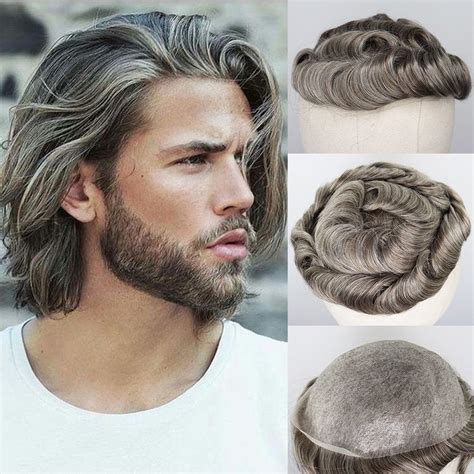Long white wigs have a rich and enigmatic history, extending far beyond their role as a fashion accessory. This article delves into the fascinating world of these wigs, exploring their origins, cultural significance, and practical applications. From ancient Egypt to modern-day costume design, long white wigs have shaped human history and continue to captivate our imagination.

Origins and Cultural Significance
The earliest known use of long white wigs dates back to ancient Egypt, where they were worn as a symbol of power and high status. Egyptian pharaohs and high-ranking officials adorned themselves with elaborate wigs made from sheep wool or human hair, often dyed white to signify purity and divinity.
In ancient Greece, long white wigs were associated with wisdom and experience. Philosophers, poets, and scholars wore wigs to enhance their intellectual image. The Roman playwright Plautus even mentions in his plays that long white wigs were a sign of respected elders.
Practical Applications
Beyond their cultural significance, long white wigs have also served practical purposes. In the 17th and 18th centuries, long white wigs were required attire for lawyers, judges, and other members of the legal profession. The wigs helped to create a sense of formality and authority in the courtroom.
White wigs have also been used as part of medical uniforms. In the 19th and early 20th centuries, surgeons wore long white wigs to prevent hair from falling into wounds during surgery. Today, some hospitals still require surgeons to wear white caps or head coverings to prevent contamination.
Modern Uses
In modern times, long white wigs have become synonymous with theater, costume design, and fashion. They are frequently used in historical dramas, fantasy films, and cosplay events to create a distinct and recognizable character. The fashion industry has also embraced long white wigs, with designers incorporating them into high-fashion collections to evoke a sense of glamour and intrigue.
Table 1: Cultural Significance of Long White Wigs
| Culture | Significance |
|---|---|
| Ancient Egypt | Symbol of power and high status |
| Ancient Greece | Associated with wisdom and experience |
| Medieval Europe | Worn by members of the legal profession |
| Renaissance Era | Signified learning and refinement |
| Modern Era | Used in theater, costume design, and fashion |
Table 2: Practical Applications of Long White Wigs
| Application | Purpose |
|---|---|
| Legal Profession | Conveys formality and authority |
| Medical Profession | Prevents contamination during surgery |
| Theater and Costume Design | Creates a distinct character |
| Fashion Industry | Adds glamour and intrigue |
Innovative Applications
In recent years, researchers and designers have begun to explore innovative applications for long white wigs. One such application is in the field of artificial intelligence. By using long white wigs as a visual cue, researchers have trained AI algorithms to recognize and interact with humans.
Another potential application lies in the medical field. Long white wigs could be used to develop specialized medical devices that facilitate surgery or provide protective covering during radiation therapy.
Effective Strategies for Wearing a Long White Wig
- Choose the Right Wig Cap: Use a wig cap that fits snugly to prevent the wig from slipping or shifting.
- Secure the Wig: Anchor the wig firmly using bobby pins, hairspray, or an elastic headband.
- Style the Wig: Brush and style the wig to create the desired look. Avoid using harsh brushes or heat styling tools.
- Trim the Bangs: If necessary, trim the bangs to frame your face and prevent them from obstructing your vision.
- Accessorize: Add accessories such as hair clips, ribbons, or flowers to enhance the look of the wig.
Common Mistakes to Avoid
- Wearing a Wig That’s Too Heavy: Choose a wig that is lightweight and comfortable to wear for extended periods.
- Ignoring Wig Care: Clean and maintain the wig regularly to prevent tangles, frizz, and damage.
- Wearing the Wig Too Tight: Avoid wearing the wig too tightly, as it can cause discomfort and hair loss.
- Over-Styling the Wig: Use styling products sparingly and avoid using heat styling tools, which can damage the fibers.
- Ignoring Hairline Concealment: Blend the wig hairline with your own hair using foundation, powder, or a wig liner.
Step-by-Step Approach to Wearing a Long White Wig
- Prepare Your Hair: Brush your hair and apply a wig cap.
- Place the Wig: Position the wig on your head and secure it with bobby pins.
- Adjust the Wig: Adjust the wig until it fits comfortably and securely.
- Style the Wig: Brush and style the wig as desired.
- Finalize the Look: Add accessories and conceal the hairline to complete the look.
The long white wig is a symbol of power, wisdom, and creativity. From its ancient origins to its modern-day applications, this enigmatic accessory has shaped human history and continues to inspire awe and admiration. By understanding its cultural significance, practical uses, and innovative potential, we can appreciate the enduring appeal of the long white wig and its timeless elegance.
